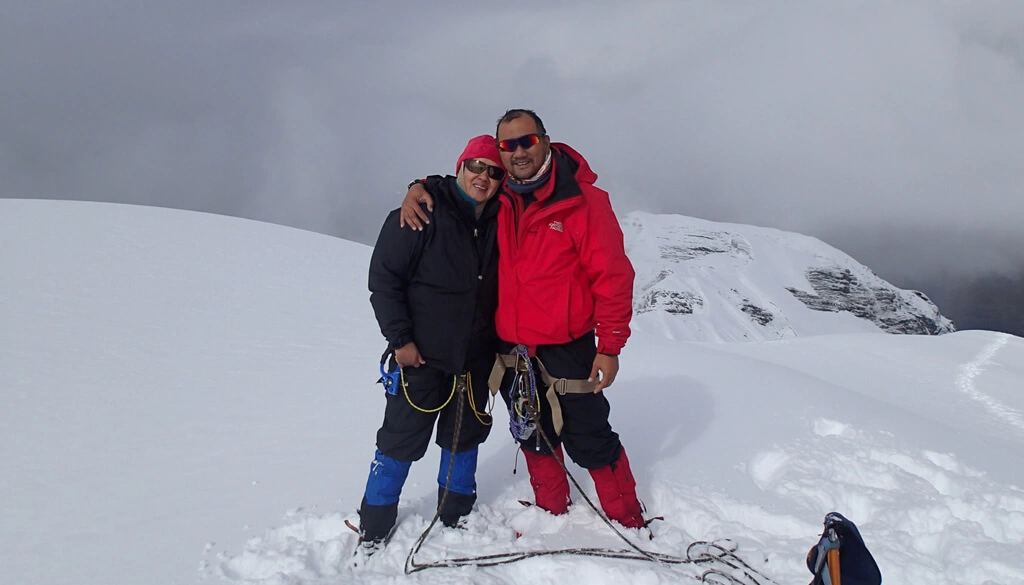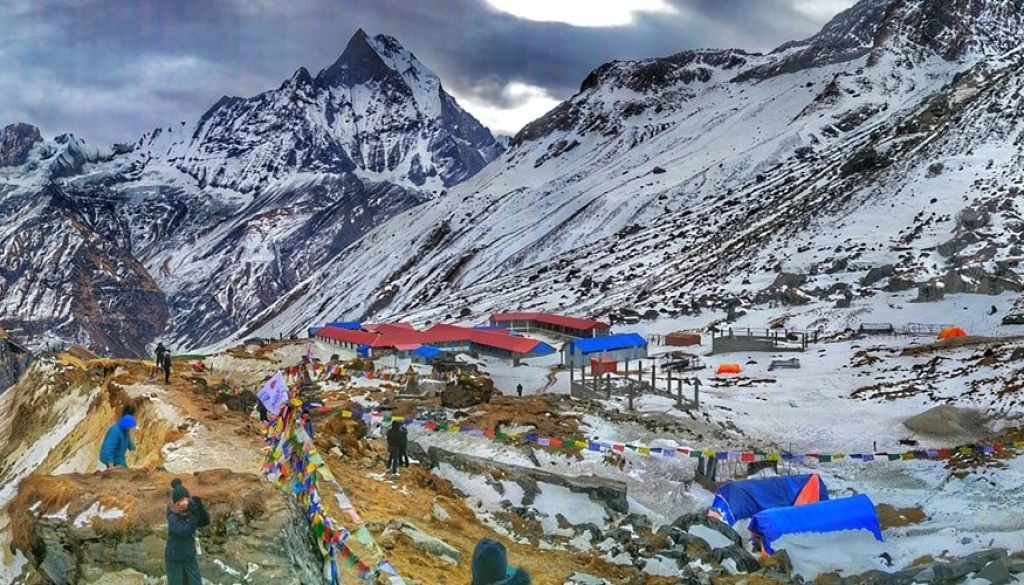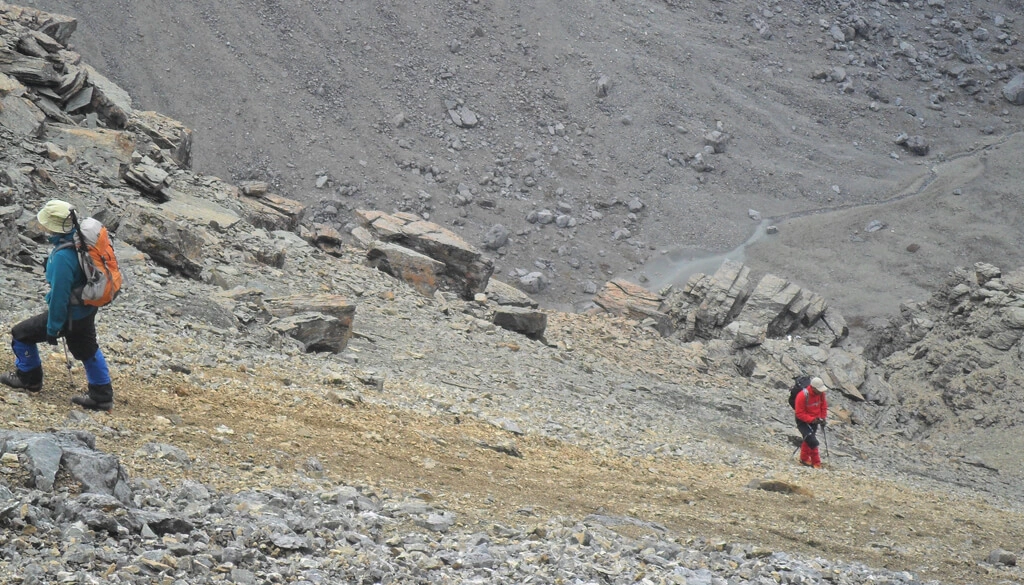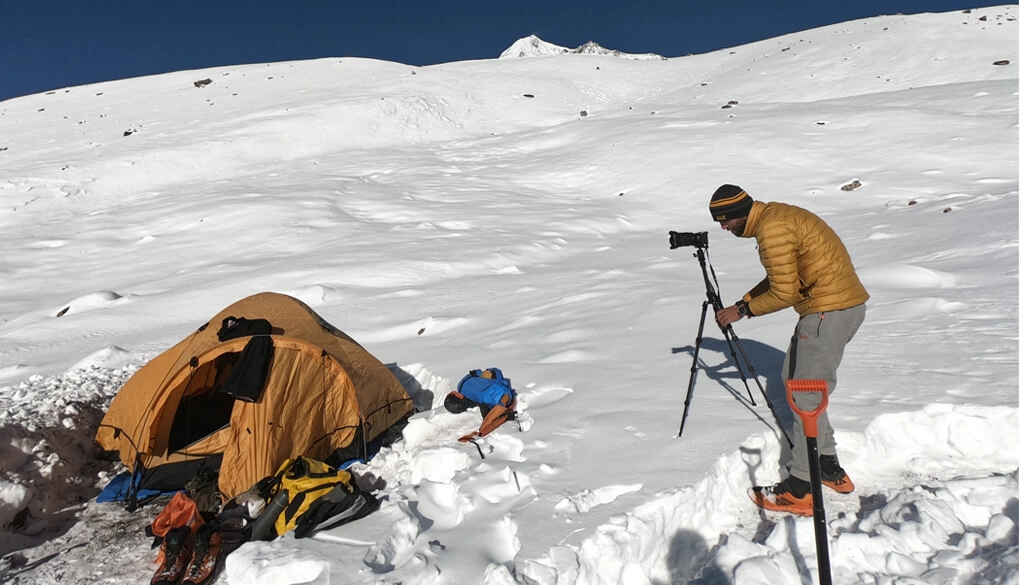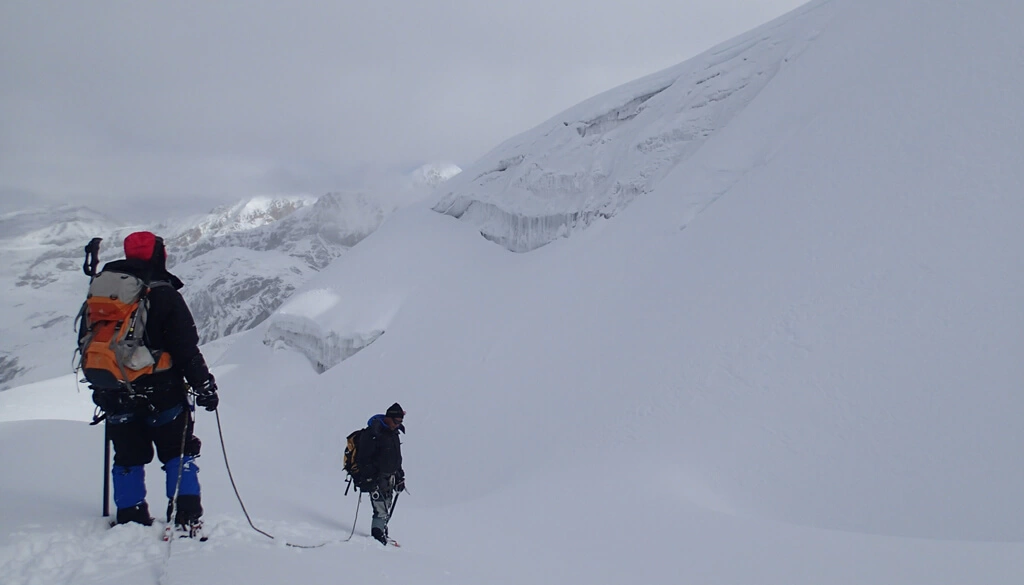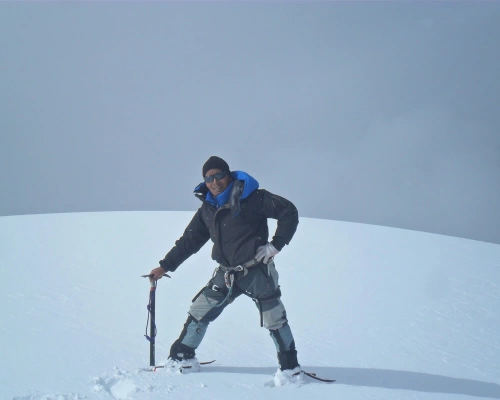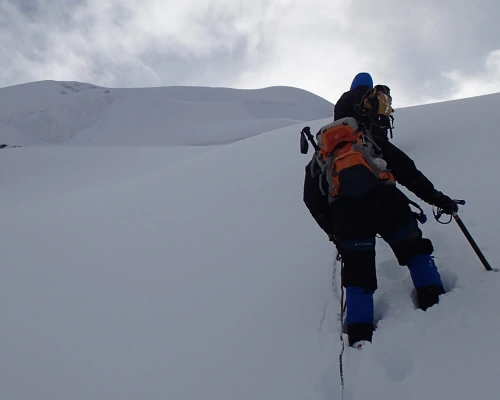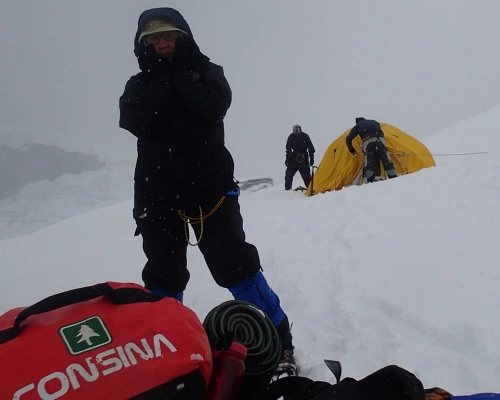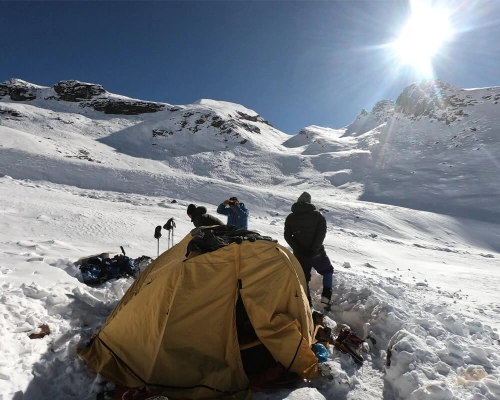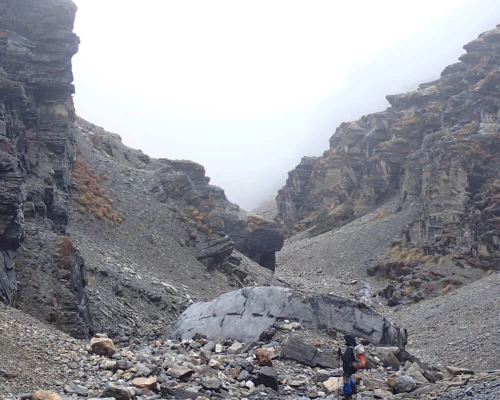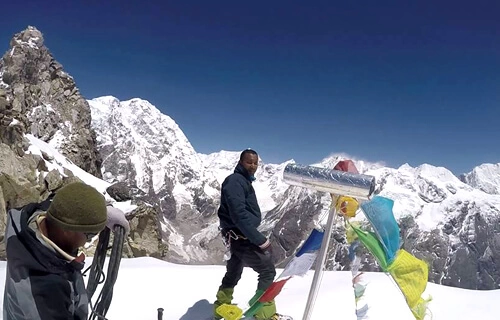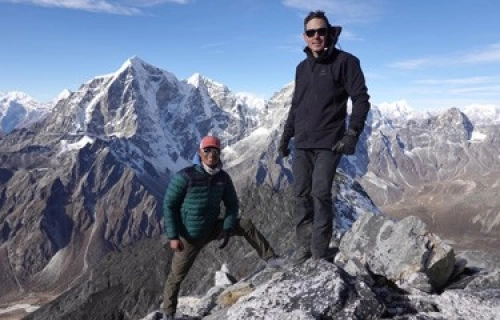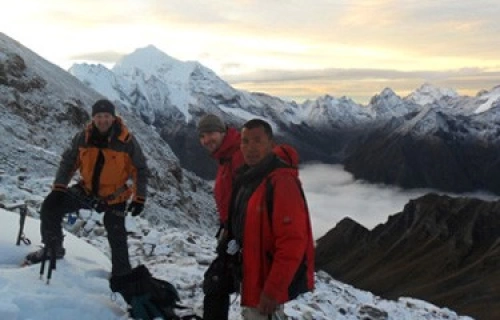About Tent Peak Climbing
It is not surprising that Tent Peak 5663m, also known as Tharpu Chuli, is a favorite peak of the Annapurna Region. Tharpu Chuli Peak, 5663m, rises in the middle of the amphitheater, encircled by immense walls of glaciers and mountains over 7000 and 8000 meters in height. Graded moderate and strenuous, this three-week expedition to Tharpu Chuli can be done by anyone who is physically fit and ready to try their first mountain in the Himalaya of Nepal. Professional Sherpa Guides will provide training on climbing equipment and skills needed to climb this peak. Since this is one of the lowest trekking peaks, and the trek is planned to allow gradual acclimatization, there is virtually no risk of altitude sickness.
The trail leading to this stunning peak is an extraordinary trek in itself. Tharpu Chuli Trekking starts from Phedi, only a 45 minutes drive from Pokhara and traces the classic stone-step trail of the Annapurna Sanctuary Trekking all the way to Annapurna Base Camp (ABC). The first few days are spent on the south side of the Himalaya, the area of highest rainfall in Nepal, where there are lush subtropical jungles and rhododendron forests. Cozy lodges provide welcome resting places in the villages which are predominately of the Gurung ethnic group. There are amazing post-card scenes of mountains, glaciers, rock faces, and sharp ridges with the patchwork of terraced fields in the foreground.
Around four days into the trip, you will leave the lush jungles behind and reach rougher terrain, with colder temperatures, and walls of rock that shoot into the sky. The north side of the Annapurnas falls in the rain shadow and has a dry alpine climate with little vegetation. Since the climatic conditions on this trek change over such a short distance, it constantly provides a new environment to explore.
The Annapurna Massif stretches nearly 64 KM between the Kali Gandaki and Marsgyangdi river valleys of central Nepal and boasts twelve peaks over 7000m besides endless smaller peaks. The Annapurna Sanctuary refers to an area totally enclosed by a ring of peaks, a natural amphitheater of ice, snow, glacier and moraine. Tent Peak lies in the center of this area on a ridge that stretches south from Tarke Kang.
The stunning 360-degree panoramic view from Tent Peak includes Hiunchuli, 6331m, Annapurna South, 7219m, Baraha Shikar, 7647m, Annapurna I, 8091m, Kangshar Kang, 7485m,Tarke Kang, 7193m, Gangapurna,7455m, Annapurna III,7555m, Gandharba Chuli, 6248m, and Machhapuchhare, 6993m.
Tent Peak Climbing Best Time, Weather and Climate
The prime time for Tent Peak climbing is during the pre-monsoon (spring) and post-monsoon (autumn) seasons. These periods provide the most favorable weather conditions and increased chances of clear skies, making it safer and more rewarding for climbers. The specific months to consider are:
Spring (March to May): This season offers stable weather, moderate temperatures, and clear visibility. The mountainside comes alive with beautiful blooming flowers and lush greenery, enhancing the overall trekking experience.
Autumn (September to November): Widely regarded as the best time for climbing in the Himalayas, autumn offers stable weather, pleasant temperatures, and excellent visibility. The skies are usually clear, providing breathtaking views of the surrounding peaks.
Climate: Tent Peak is located in the Annapurna region of Nepal, which experiences a predominantly alpine climate. The climate is characterized by cool temperatures, especially at higher altitudes. As you ascend, temperatures gradually decrease, so it is vital to have suitable gear to stay warm and protected from potential frostbite or hypothermia.
How difficult and technical is Tent Peak Climbing?
Tent Peak is considered to be a moderate to slightly challenging climb. However it is not a technical climb and moreover it does not require any previous climbing experience, but it does require a certain level of fitness and preparation.
How can I communicate if there’s an emergency during Tent peak climbing?
For the trekking part, the tea houses will have internet facility or you need to purchase internet recharge cards. But the internet speed will be very basic. You can also purchase Nepalese SIM cards (NCEL or NTC) but their coverage will be limited. On the other hand, our climbing guide will also carry a satellite phone for emergencies use with minimum cost whenever the internet and data connections are unavailable. You can also bring your own if you have one.
Where is Tent Peak?
Tent Peak is located in the northwestern region of Nepal, within the Annapurna Conservation Area. It is one of the mountains in the Annapurna Range, situated in the north of the Annapurna Base Camp and opposite of Mount Machhapuchhre.
How many nights do I spend in tent during Tent Peak Climbing?
For the trekking part you are spending nights in clean and comfortable tea houses 9 nights. However, for the climbing period you are sleeping 3 nights in the tent.
Is travel Insurance needed for Tent Peak Climbing?
A big yes! Annapurna Foothills Treks highly recommends you to get travel insurance before this adventurous trip to Nepal. When purchasing travel insurance, ensure that it covers emergency evacuation, injury, lost baggage, liability, and medical treatment is recommended. The insurance must cover all the activities that you will be undertaking during your stay in Nepal. Annapurna Foothills Treks and Expeditions Pvt. Ltd. can organize the appropriate medical response based on your policy.
Planning of climbing Tent Peak in 2025 and 2026
Guaranteed Departure .. Please get in touch for further details.
